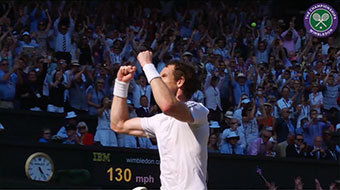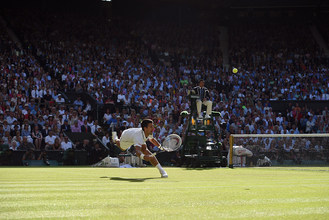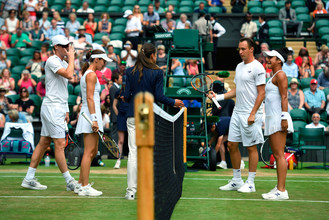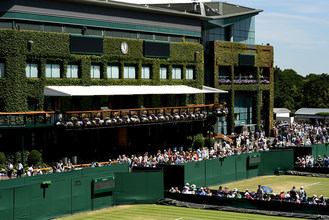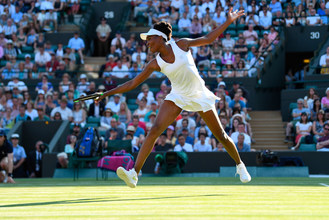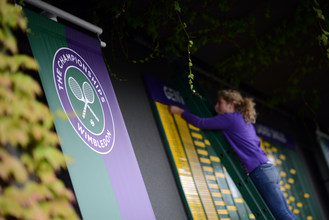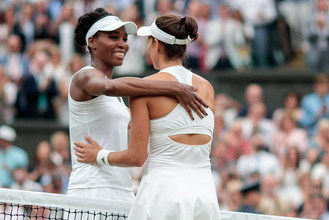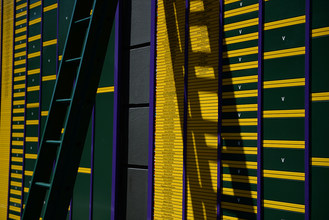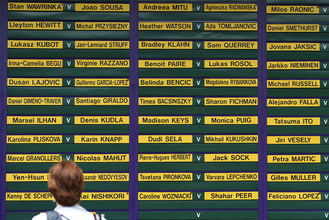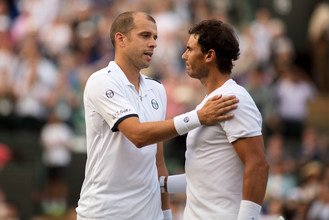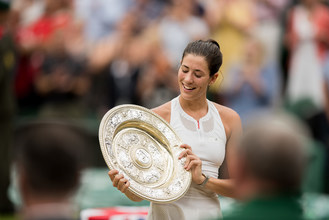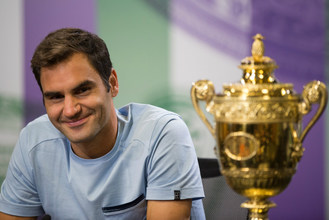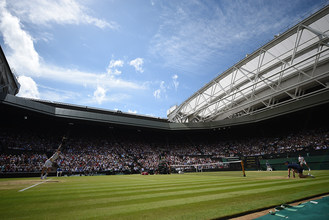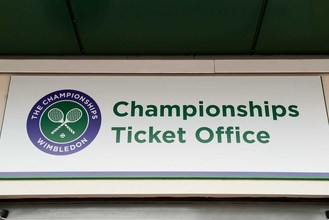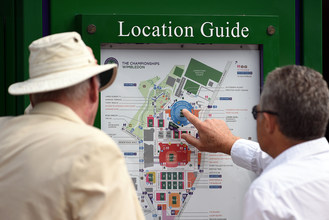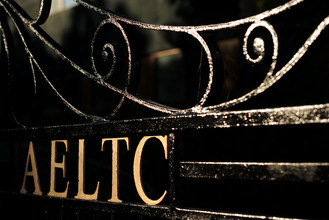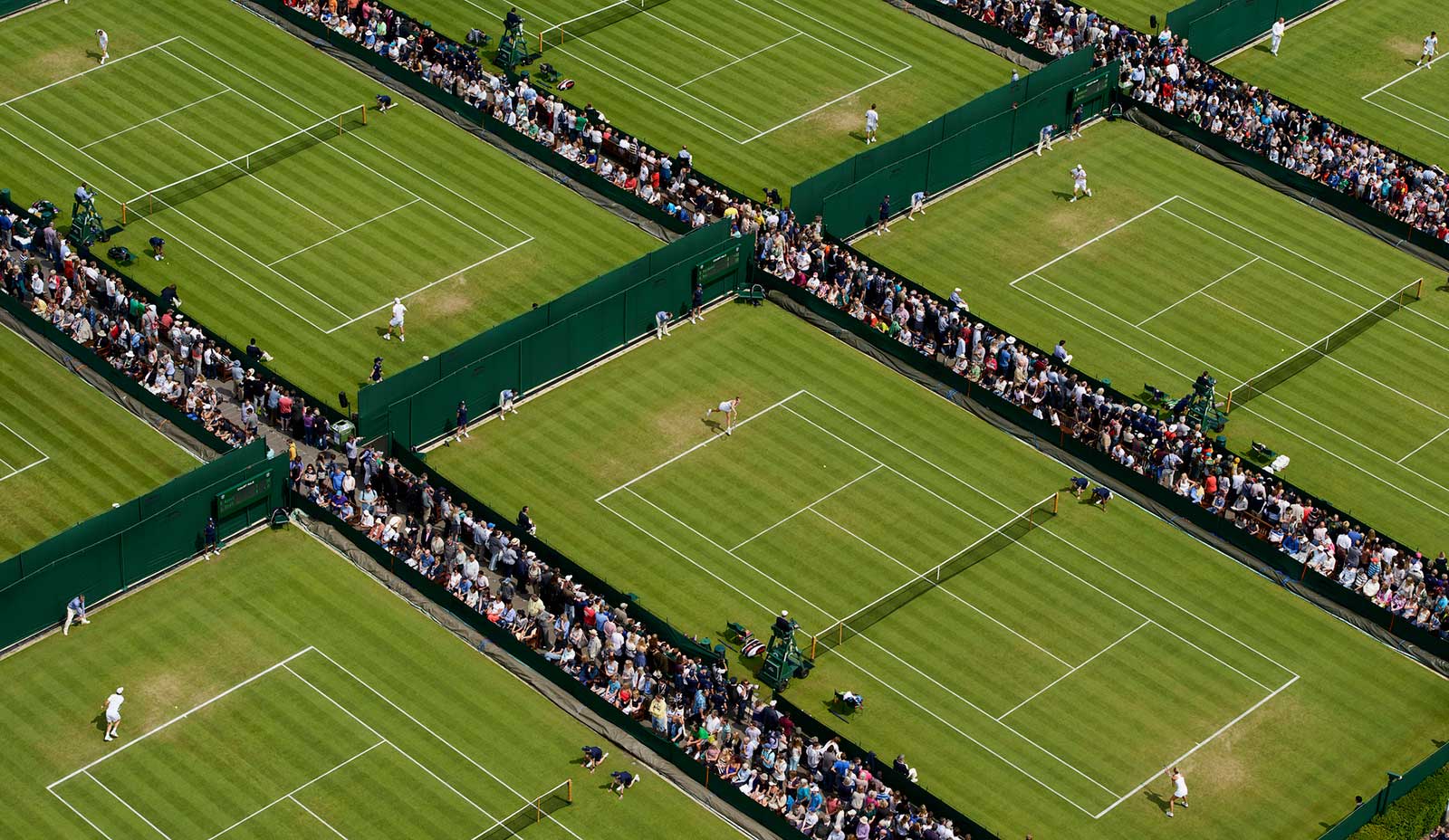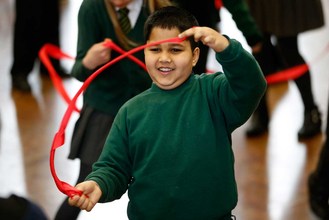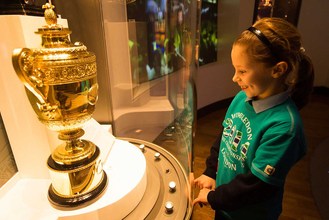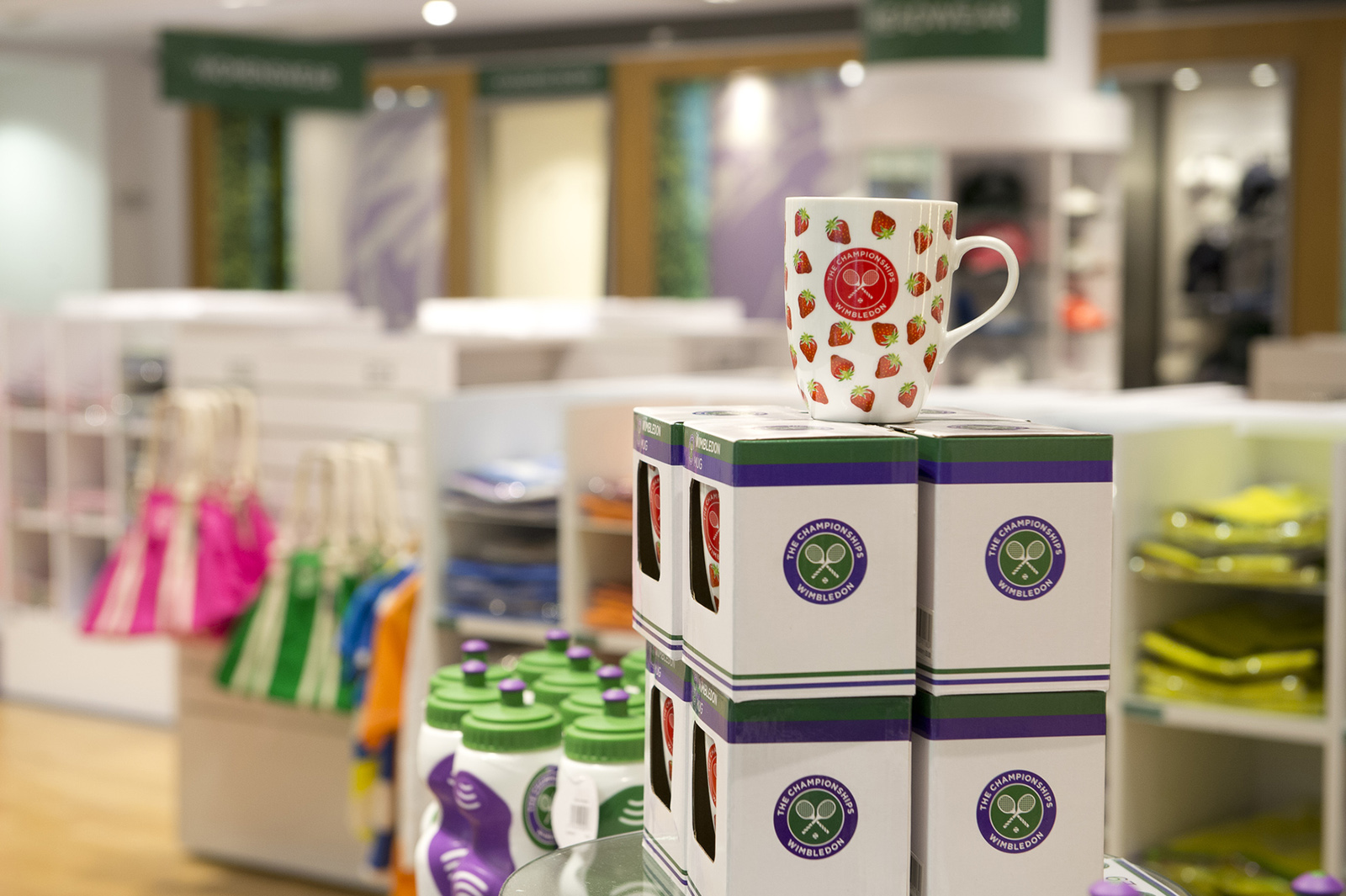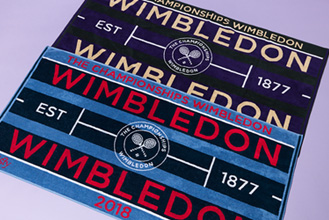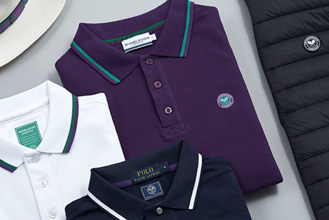1980: Billie Jean King v Martina Navratilova
The 37-year-old King returned to Wimbledon for another assault on the title she loved, saving a match point in a 2hrs 40mins encounter against Pam Shriver to reach the quarter-finals. Once there, it was Martina Navratilova who would stand in her way, defeating her 7-6, 1-6, 10-8, in a match that took two days to complete.
Once the rain had stopped, BJK agreed to resume on the condition that tournament officials immediatedly suspend the match if the rain resumed, as she wore glasses. So the first set began, the drizzle came, and the chair umpire refused to suspend the match until Navratilova won it in a tie-break.
Delayed overnight, King returned the next day, romping through the second set in just 17 minutes. In the third set the elder competitor served for the match at 6-5, but produced four volleys into the net. Saving match points at 6-7 and 7-8, the ill-fated glasses finally got their comeuppance at 8-9, breaking during the changeover.
King had a spare pair, but they weren't quite right. Saving two more match points before Navratilova finally triumphed 10-8, King said afterwards "I think that may be the single match in my career that I could have won if I hadn't had bad eyes."
1980: Bjorn Borg v John McEnroe
In any assessment of great sporting moments of the 20th Century, the fourth set tie-break of the 1980 Wimbledon Gentlemen's Singles final between the defending champion Bjorn Borg of Sweden and John McEnroe of the USA has earned an unchallenged place.
Borg was then 24 and was playing in his fifth consecutive Wimbledon final having won the previous four. For second-seeded McEnroe, this was his first appearance in the final at the age of 21.
The Borg-McEnroe fourth set tie-break was to make history. It was to range over 22 minutes, produce 34 contested points, which is a record for a Wimbledon final, and from start to finish produced moment after moment of changing fortunes, with match points and set points following in a tantalising sequence. When McEnroe's viciously top-spun return produced a volley error from the Swede, the match was all square after just over three hours.
Borg went for broke in the deciding set, hitting 80 per cent of his first serves and losing only three points on serve in the entire set. McEnroe contributed fully to this astonishing final and twice served to save the match. Borg finally reached his eighth match point when McEnroe missed a low volley. A backhand passing shot ended it and Borg was Champion by 1-6, 7-5, 6-3, 6-7, 8-6.
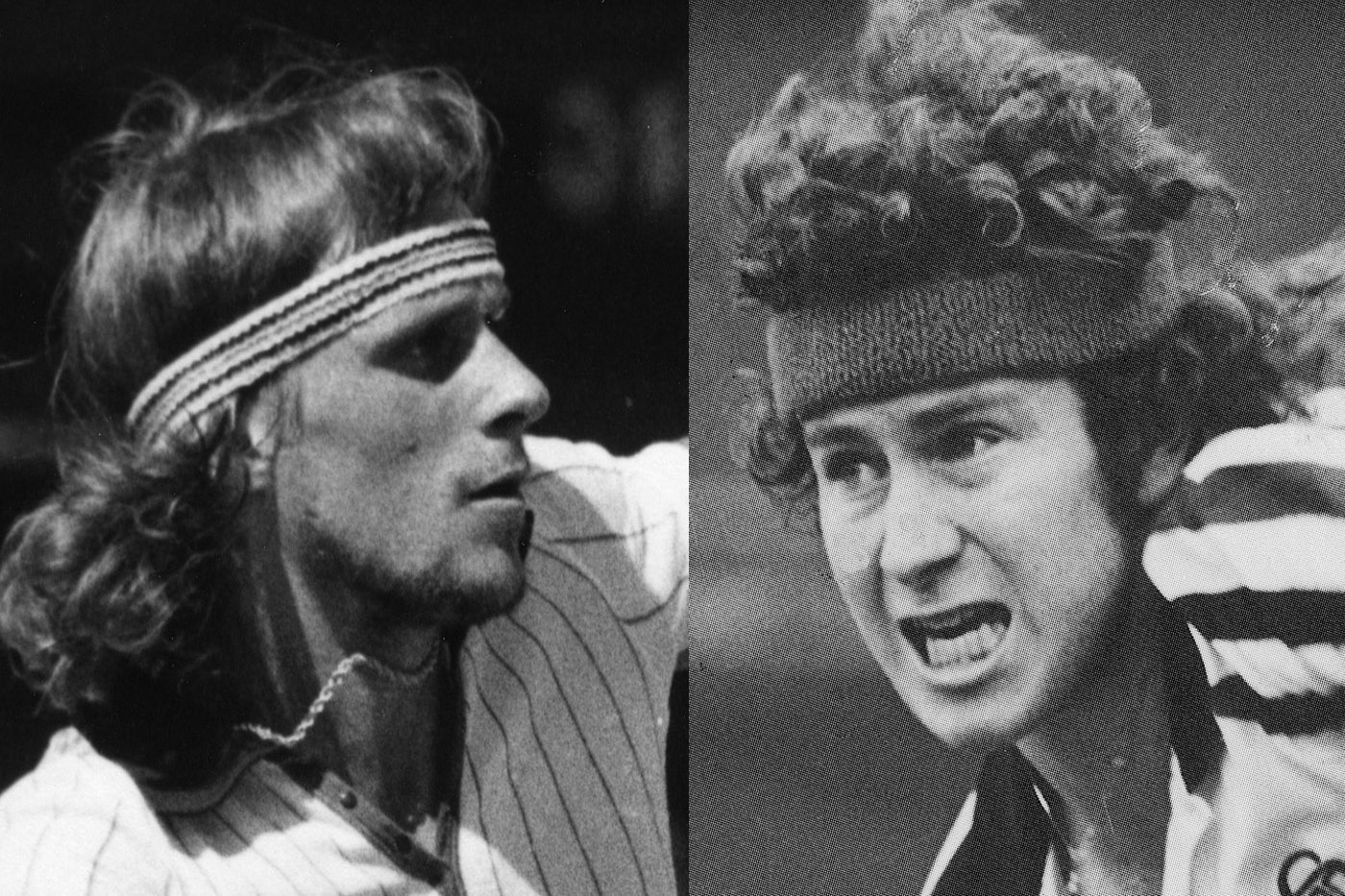
1981: Bjorn Borg v John McEnroe
As the sun finally went down on the last day of the wildest Wimbledon fortnight in 104 years, the sign on the main outside scoreboard of the All England Club read "Well done J.P...bad luck, Bjorn." Having come so close and yet so far the year before, John McEnroe finally ended Bjorn Borg's 41-match-winning streak at Wimbledon on the fourth of July, in most memorable fashion.
Before play began, McEnroe had criticised the weather, the grass courts, the officiating, and concluded: "There's nothing championship about this tournament except its prestige." In his first match, there was the infamous blow-up when McEnroe delivered both barrels to Edward James, calling him 'the pits of the world.' He was fined $1,500. By the end of the week, he was its latest Champion.
But by the time he reached the final, McEnroe had chanelled his anger, and effectively turned the tables on his great rival. Producing 64 winners to the Swede's 47, 23 of them in one set, McEnroe came through 4-6, 7-6, 7-6, 6-4 to dethrone the mighty Swede.
Nevertheless, he still refused to attend the Champions' dinner.
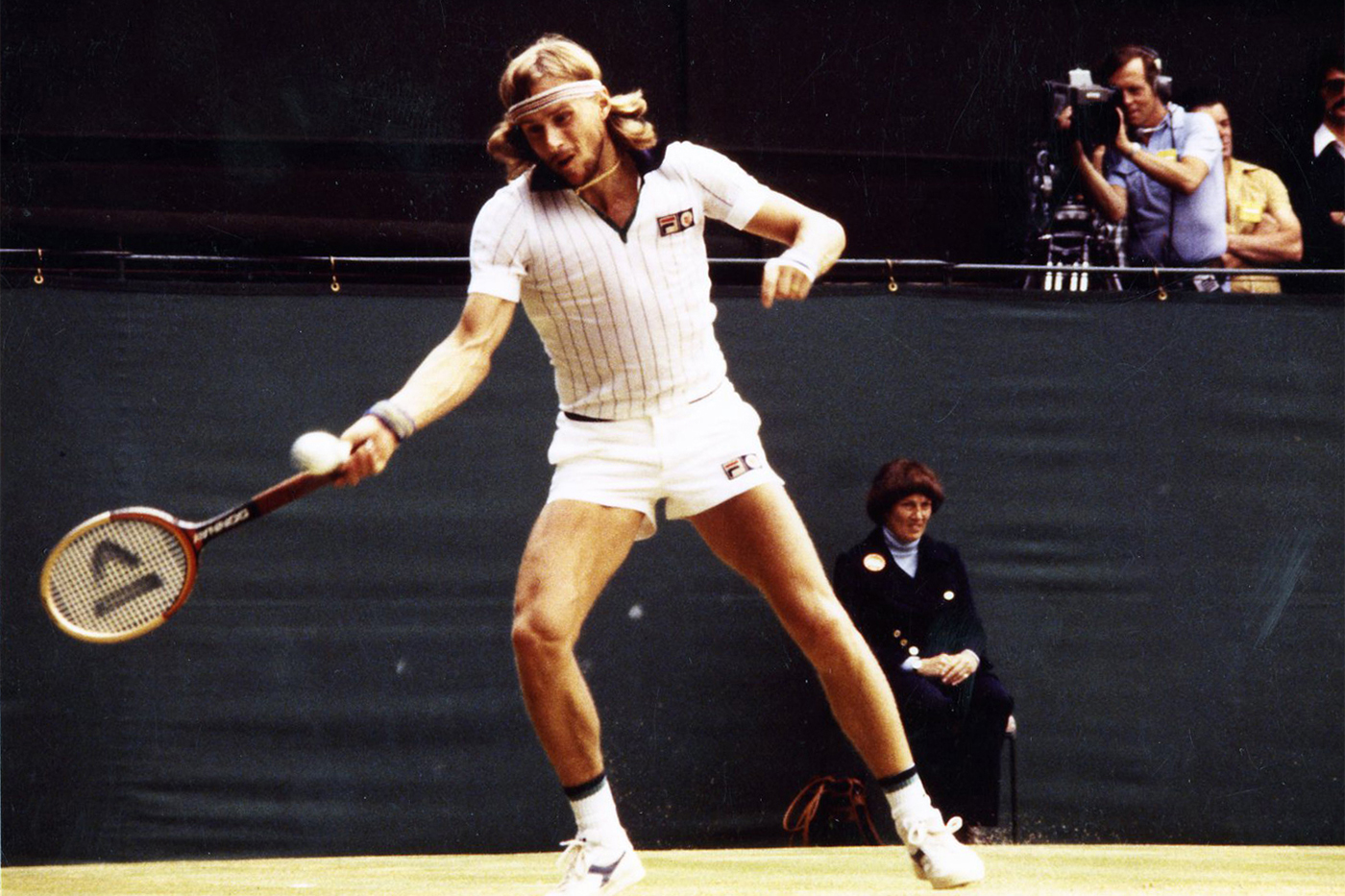
1981: You cannot be serious
It is one of the most infamous lines in tennis history. Remembered and imitated on an almost daily basis around the world, in 1981, a headband-wearing, frizzy-haired John McEnroe was so furious at Wimbledon umpire Edward James's refusal to call his serve in, that he uttered the immortal words "you cannot be serious". Subjecting both James and the Centre Court crowd to a tirade of ill-tempered mutterings, it became McEnroe's calling card, so famous that he titled his autobiography, somewhat tongue in cheek, 'Serious'.
McEnroe's assertion that he had spotted chalk dust flying up from the line might not have justified his description of the line judge as an 'incompetent fool', but it seems it was certainly more than mere gamesmanship designed to put off his opponent Tom Gullikson. McEnroe went on to beat Gullikson and win the singles title, exacting revenge on his temperamental opposite, the icy-cool Bjorn Borg.
1982: John McEnroe v Jimmy Connors
Jimmy Connors and John McEnroe both shared fascinating rivalries with Bjorn Borg, but the two Americans also had many extraordinary encounters against each other between 1977 and the late 1990s. "Something like that never goes away, especially between Mac and myself," Connors said. "To have carried on this rivalry for so many years and for you still to be talking about it, must mean that we made our mark somewhere."
Their very first meeting came at the Wimbledon semi-finals in 1977, so it was perhaps fitting that it was Wimbledon again that provided the backdrop for one of their most blistering encounters, this time in the final. For Connors, victory would give him a second Wimbledon title exactly eight years after his first. For McEnroe, it would mark a successful defence of The Championships that he won for the first time the year before, and give him legitimate claim to the No.1 world ranking.
The pair had met in the final of The Queen's Club event two weeks previously, a match Connors won, which gave him a psychological edge over his tempestuous rival And so it proved. Taking four hours and 14 minutes, the longest men's final in Wimbledon history at that point, Connors dethroned McEnroe in five sets that varied from rather slow to fiercely brilliant. Triumphing 3-6, 6-3, 6-7, 7-6, 6-4, the two Americans fought on such terms that both won the same number of points, 173.
1984: Celebrating Fred Perry’s 50th anniversary
One of Wimbledon's greatest champions was celebrated in 1984, when a statue was erected at the Church Road grounds to mark the 50th anniversary of Fred Perry's first singles Championships. The statue, made of bronze, shows Perry in his prime, immaculately turned out in long trousers, slicked back hair, and of course, the polo shirt bearing his now world-famous Fred Perry brand. Look closely and you might even see the ghost of a smile on the great man's lips.
Depicting a typical Perry stance, legs bent, racket raised, ready to hit the ball on the rise, the statue sat for a long time just inside Gate 5, one of the main entrances to the Grounds. But on the completion of the building works surrounding Centre Court, Fred was moved to his current position outside the Debenture Holders entrance to Wimbledon's jewel in the crown.
1985: A curious fashion statement
The Grounds at SW19 have played host to many a famous outfit. From Suzanne Lenglen's long skirts, to Gussie Moran's infamous lace-trimmed underwear, Serena Williams' 'strawberries and cream' motif in 2010, to Bethanie Mattek-Sands' shorts and knee-length socks - players have brought their own individual style to Wimbledon, within the traditional all-white rule.
But perhaps one of the most extraordinary of outfits was brought to Church Road by American Anne White in 1985. Competing against fifth seed Pam Shriver in the first round on an outer court, White took off her warm-up tracksuit to reveal a white, one-piece lycra body suit. Attracting a lot of attention from the crowd and the photographers as she moved around in an outfit more suitable for a figure skater than a tennis player, play was suspended for the day at one-set all.
Referee Alan Mills took it upon himself to have a quiet word in her ear and suggest she wore something more appropriate the next day, which she did. "I had no idea it would be so controversial," White said afterwards.
1985: Lighting strikes Centre Court
Most people will probably remember the 1985 Championships as the year a certain red-haired German by the name of Boris Franz Becker sensationally served, volleyed and dived his way to his first Wimbledon title aged just 17. Or maybe it would be the controversial all-in-one bodysuit worn by American Anne White during her first round match against Pam Shriver that year.
For me, though, it was the – literally – explosive first Monday when Centre Court was rocked to its foundations by a blinding light and deafening explosion. We later discovered lightning had struck a corner of a new £4 million administrative building attached to Centre Court that housed the press centre. TV footage showed ballkids jumping out of their skins as those inside the arena waiting for the first match of the day felt the full force of the impact.
On the outside of the structure, six lumps of masonry weighing around half a pound each fell from 90ft, narrowly missing spectators below. Not that all of them were too concerned, however. American fan Gayle Burns told the Sarasota Herald Tribune later that day: "[The masonry] missed me by two feet. But it makes a lovely souvenir!"
1985: Boris Becker
Boris Becker will be long remembered for his astonishing victory in 1985 when he won the Gentlemen's Singles Championship as an unseeded 17-year-old. Despite winning the title at Queen's Club prior to the 1985 Championships, Becker went into the draw unseeded because he was ranked just 20th in the world at the time.
Becker defeated the South-African born Curren in the final, with his powerful serve, mid-air volleys, and tireless chasing all underlining the German teenager’s ambition. He was too quick, too strong for Curren and won 6-3 6-7 7-6 6-4.
He was the youngest champion at 17 years, 227 days. He was the first German winner and the first unseeded player to win. The fact that Becker had dropped eight sets on the way had been equalled only once before by Ted Schroeder in 1949.
The Becker of 1985, standing 6’1.5” and weighing 173lbs, was to go on to retain the Wimbledon title in 1986 and win again in 1989. He was runner-up on four other occasions and played for the 15th and final time in 1999 to complete a career record at the All England Club of 71 matches won and 12 lost.
1987: Pat Cash
Pat Cash became the 11th Australian to win Wimbledon, joining Norman Brookes, Jack Crawford, Frank Sedgeman, Ashley Cooper, Lew Hoad, Neal Frase, Rod Laver, Roy Emerson and John Newcombe. Many American men have won Wimbledon, but somehow, for Australians, it is different. Australian boys pick up rackets and play tennis on grass and dream of Wimbledon.
And to win Wimbledon, Cash beat first Mats Wilander, then Jimmy Connors, and then the No.1 player in the world, Ivan Lendl, in the final. Not only that, he beat him in straight sets, 7-6, 6-2, 7-5 to join the other Aussies. "There's one thing I wanted to do in my career," Cash said afterwards. "And I did it today."
So overwhelmed was the earring-wearing Aussie, he skipped off the court, climbing up into the stands to the player's box to hug his girlfriend, family, and coach Ian Barclay. It is an iconic celebration that has been repeated by many players over the years.
1987: Chris Evert v Martina Navratilova
If 20th Century women's tennis were to be immortalised for the world's post-microwave generations to see, a tape of the Martina Navratilova-Chris Evert semi-final at Wimbledon 1987 should be entombed. Competing in their penultimate match against each other at Wimbledon, as is tradition, Navratilova and Evert delayed their exit to curtsy to the Royal Box, where Princess Diana stood in an oleo-coloured frock and applauded.
Navratilova, reknowned for her athleticism, dived and body-rolled after Evert's shots as never before, taking the first set 6-2. Throughout the two hours, Evert played superb catch-up tennis, taking the second set 7-5, and she almost got there before time ran out, Navratilova sealing the win 6-4 in the third. She went on to win the title, defeating Steffi Graf in the final for her eighth Wimbledon singles title.
1987: Jimmy Connors v Mikael Perfors
If anyone needed reminding that Jimmy Connors was one of the greatest competitors ever to grace a tennis court, there is one match that stands out. Trailing Mikael Pernfors 1-6, 1-6, 1-4 in the fourth round of the 1987 Wimbledon singles, 34-year-old Connors, nursing a leg injury, looked as if he had finally run out of puff.
Not quite. Bouncing back in sensational fashion, drawing reserves of energy from who knows where, the American won 18 of the last 25 games to seal an extraordinary comeback.
"My ego was hurt. I had to do something. So I decided to fight even harder," said Connors afterwards, going on to make the semi-finals before losing to eventual champion Pat Cash in straight sets.
He played another four Wimbledon’s, still causing the occasional upset. His last tournament came in 1992 when he went out in the first round at the age of 39.
1988: Chris Evert v Martina Navratilova
Chris Evert and Martina Navratilova shared one of the greatest rivalries in women's tennis, meeting 80 times across a 15-year period. The final year of that rivalry came in 1988, with the duo meeting five times - at the Australian Open, in Houston, in Filderstadt, Germany, in Chicago, and of course, at Wimbledon.
American Evert held an extraordinary record at the Grand Slams, never failing to reach at least the semi-finals of the 34 Grand Slam singles event she participated in. It was at this stage at Wimbledon 1988 that she met her old foe Martina. Navratilova had won their encounter at Wimbledon the year before, but Evert had won both meetings in 1988. Navratilova came out the stronger, racing through the first set 6-1, before Evert bounced back to lead 4-3 in the second. After a brief interruption as the heavens open, Evert returned to take the second set 6-4.
Centre Court covered again as thunder rumbled over southwest London, the match was further delayed, before Navratilova returned to win 7-5 in the third, the pair's final three-set face-off.
1988: Steffi Graf wins maiden title
"I think it is something not many people after me will achieve," said Steffi Graf, after defeating Gabriela Sabatini 6-3, 6-3 in the final of the Olympics in Seoul. "Winning the Grand Slam first and the gold medal afterwards. That's amazing.I'm very excited."
Only four players had won the coveted calendar Grand Slam of Majors - the Australian Open, French Open, Wimbledon and the US Open - in the same year. But none of them, not Maureen Connolly, Margaret Court, Don Budge, or Rod Laver, had ever won an Olympic gold medal as well. Admittedly, given the absence of tennis from the Olympic games between 1924 and 1988, they did not have a chance. But that did not detract from the 19-year-old German’s achievement.
Registering a 40-match unbeaten streak, and a win loss record for the year of 66-2, Graf's miraculous run came very close to being undone halfway through the hurdle, at Wimbledon. Facing 31-year-old Martina Navratilova, the doyenne in resident on Centre Court, the teenage Graf was trailing a set and 0-2 when the multi-Wimbledon champion finessed a drop volley into an expanse of empty court. Normally, that would have been that. But Graf bounded across the turf and popped the ball up past the defending champion. Graf triumphed 5-7, 6-2, 6-1 for her first Wimbledon title. She even had to be shown how to hold the trophy for the crowd.

